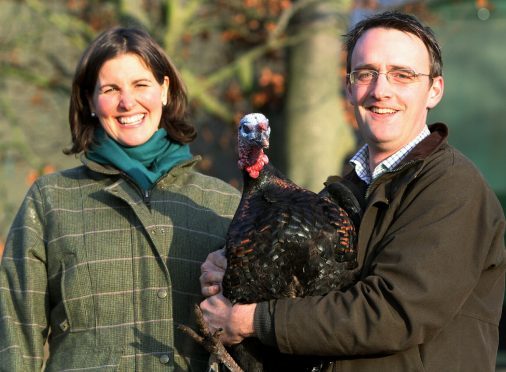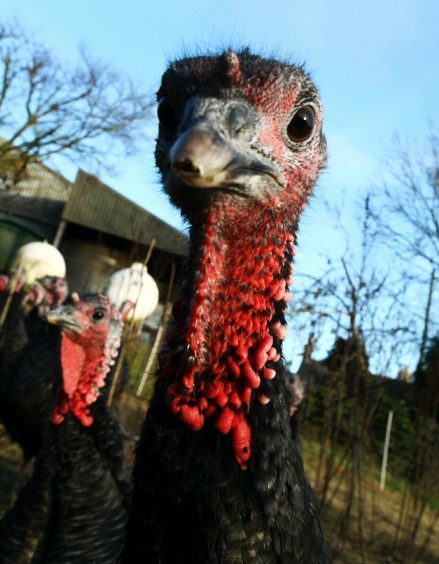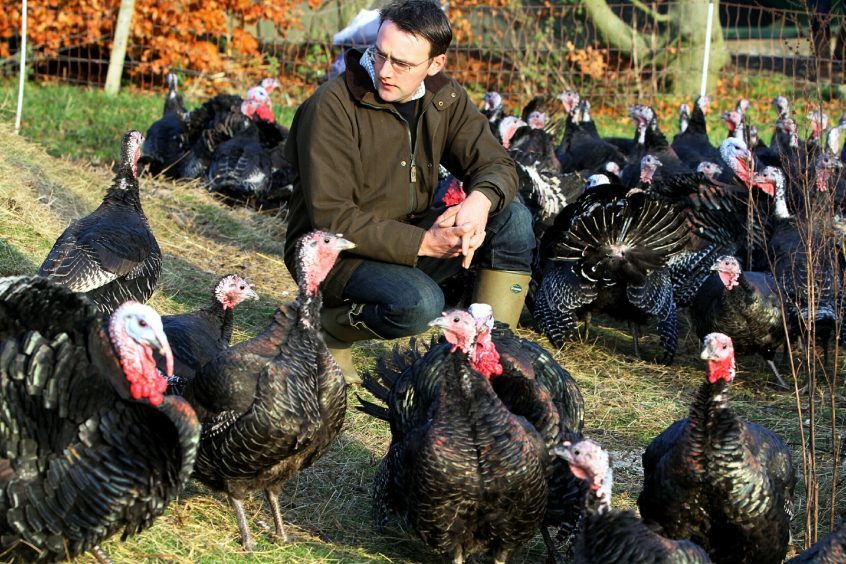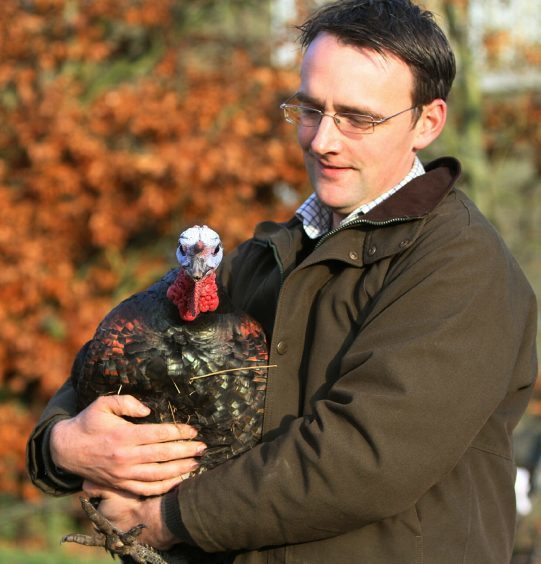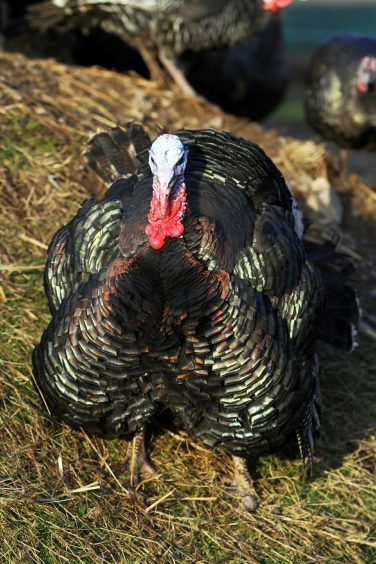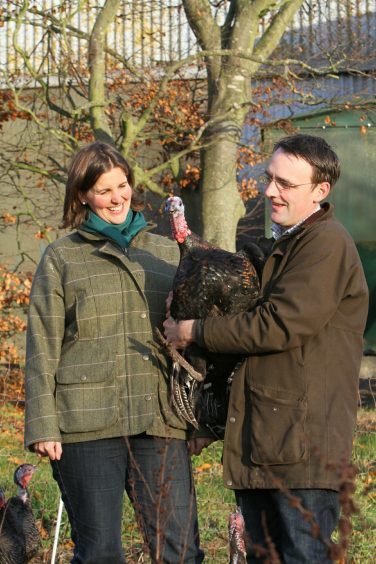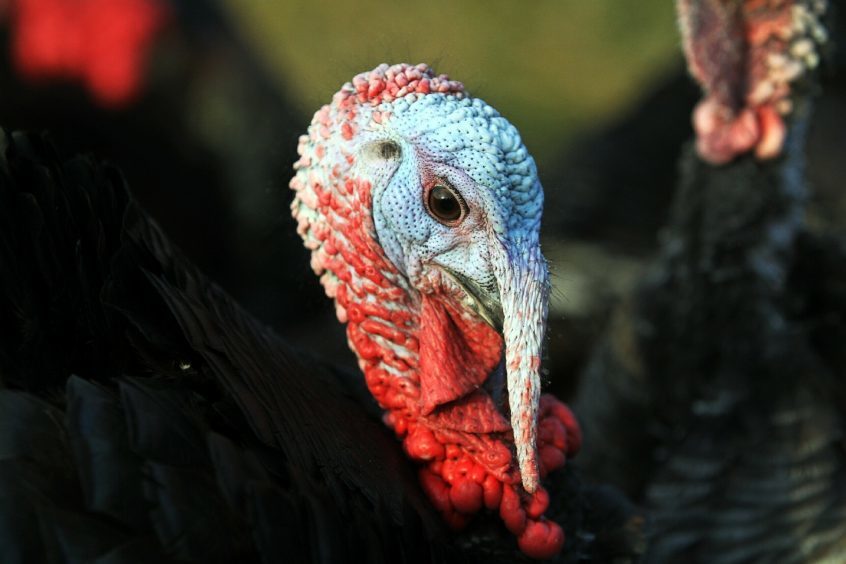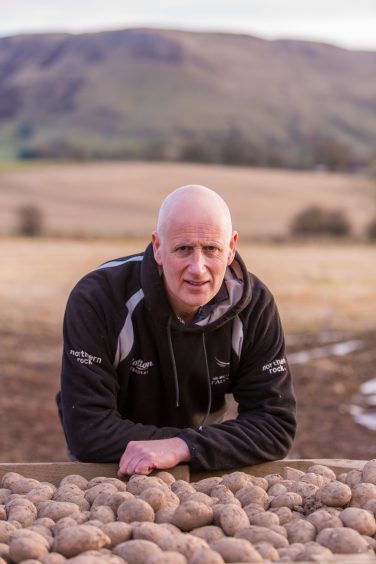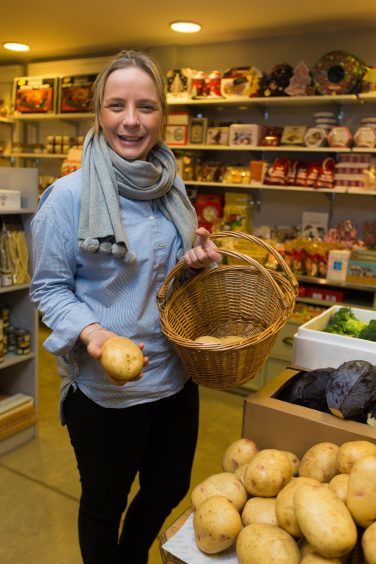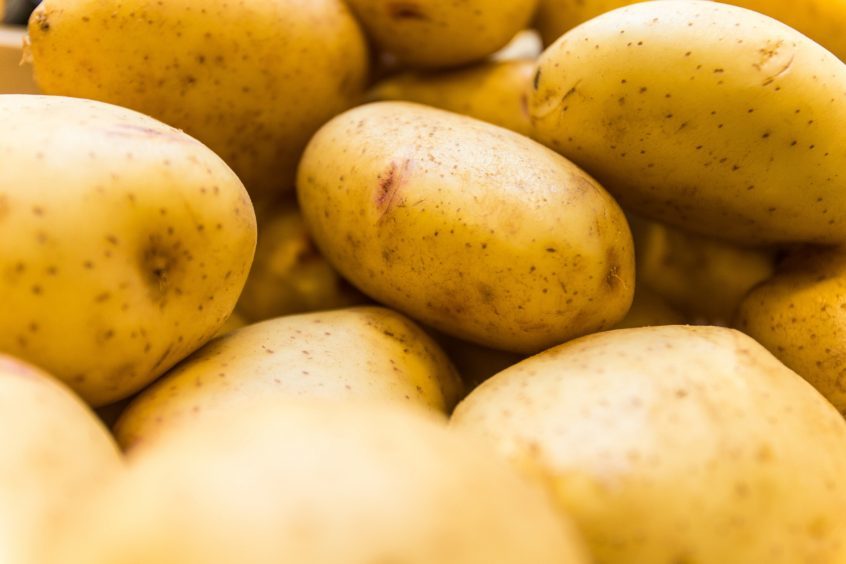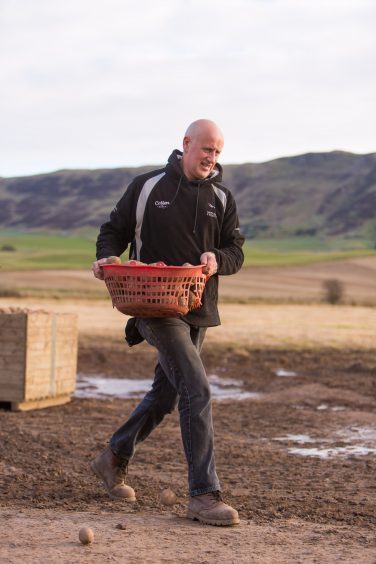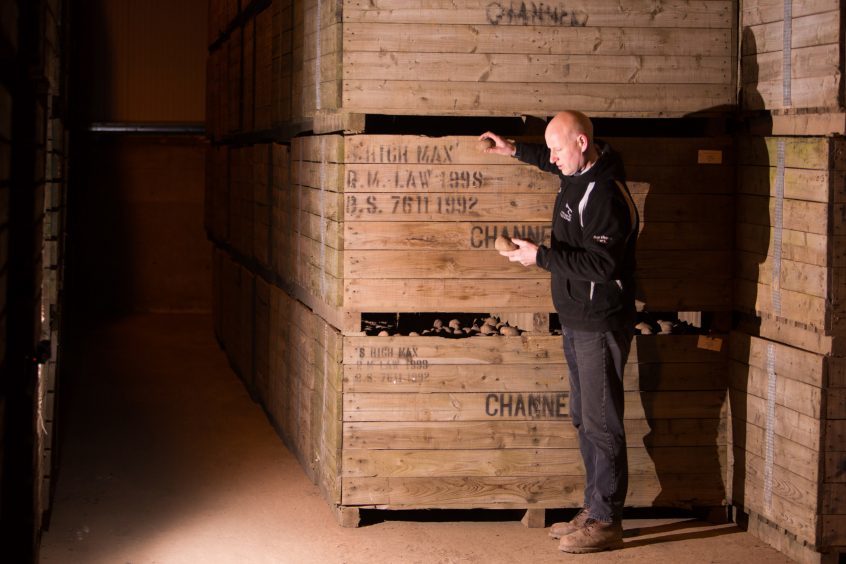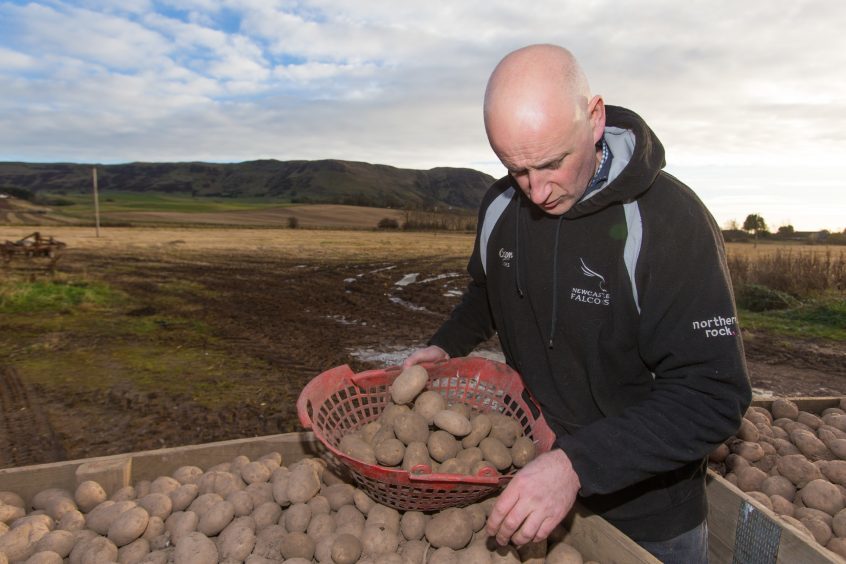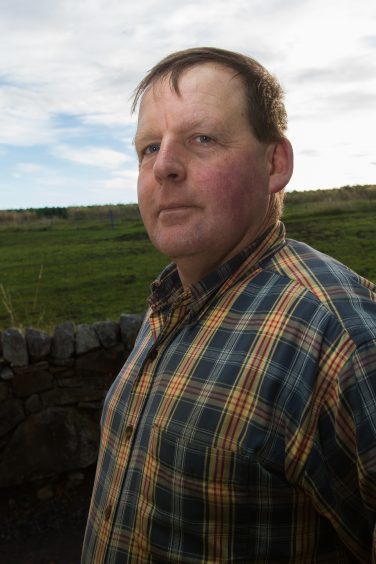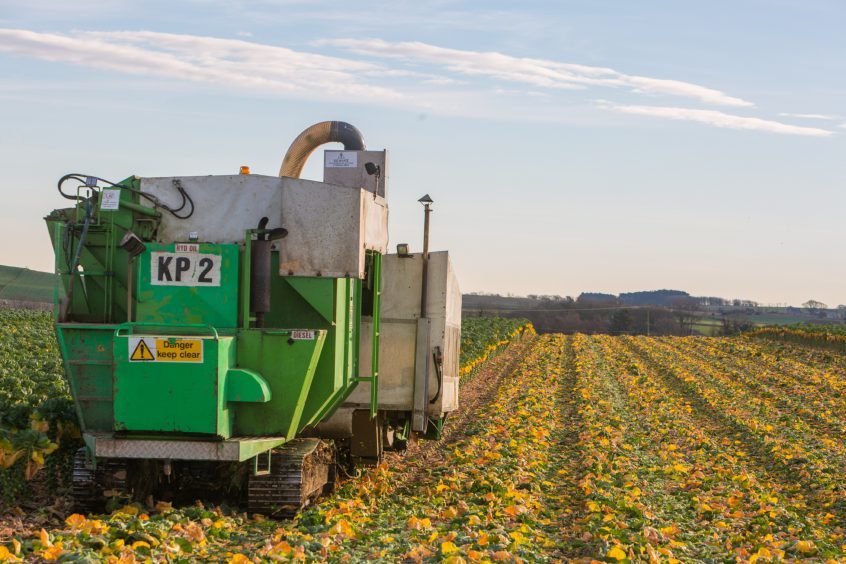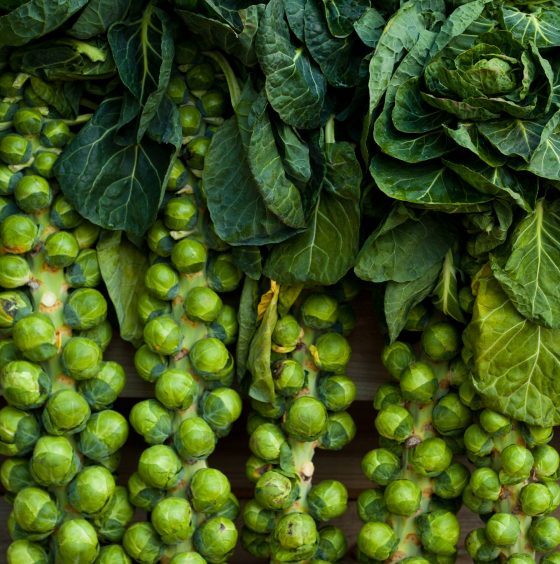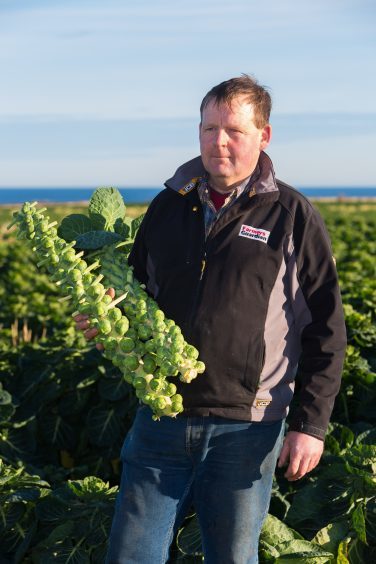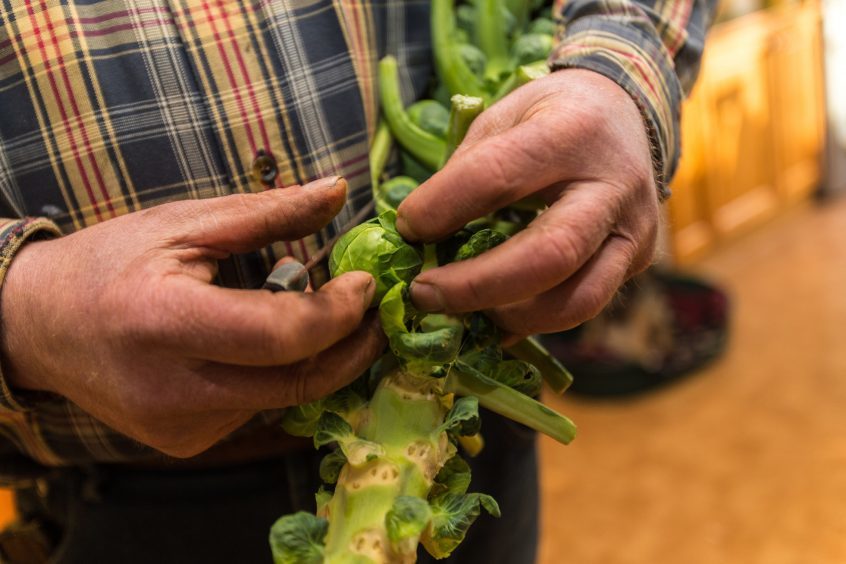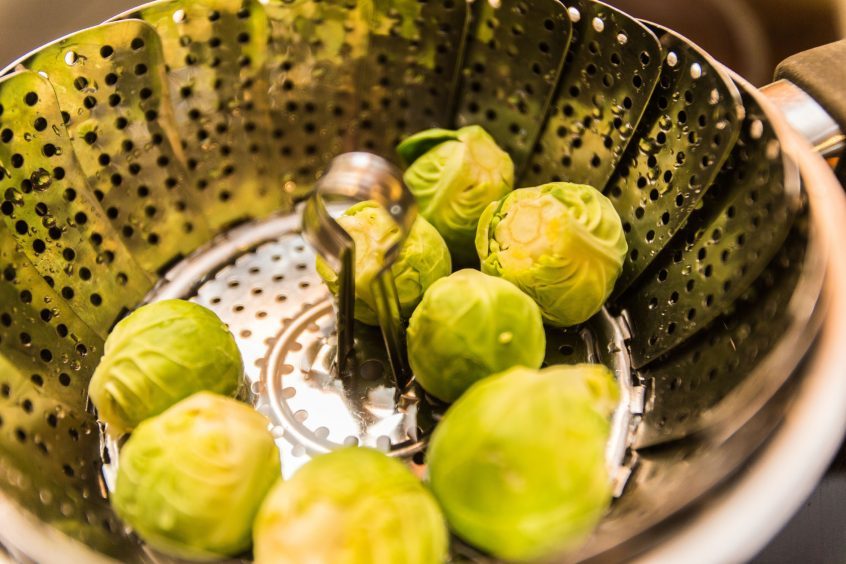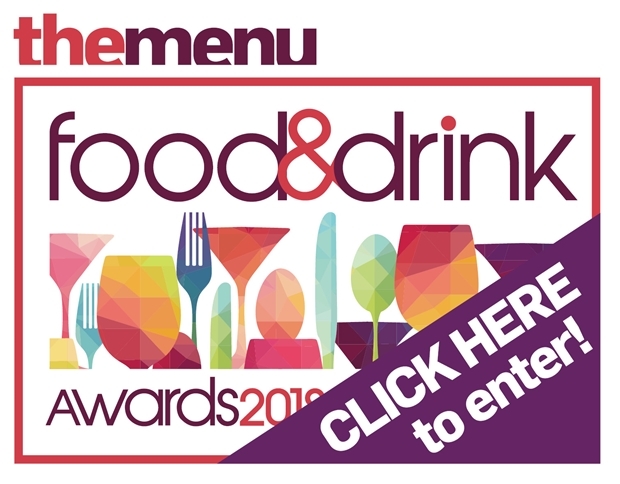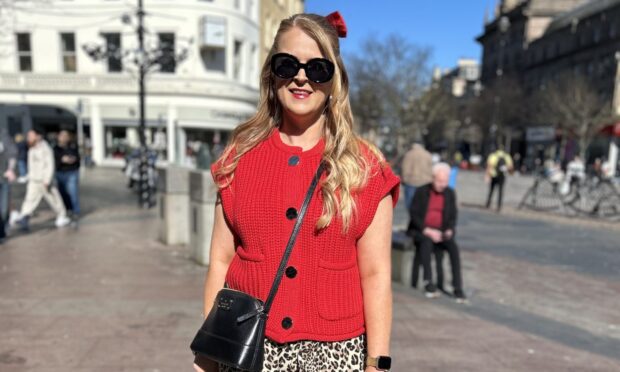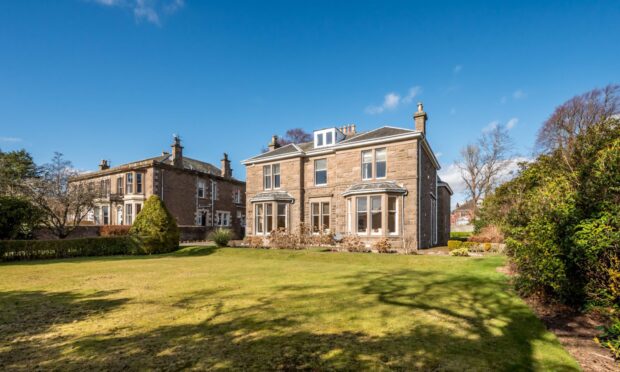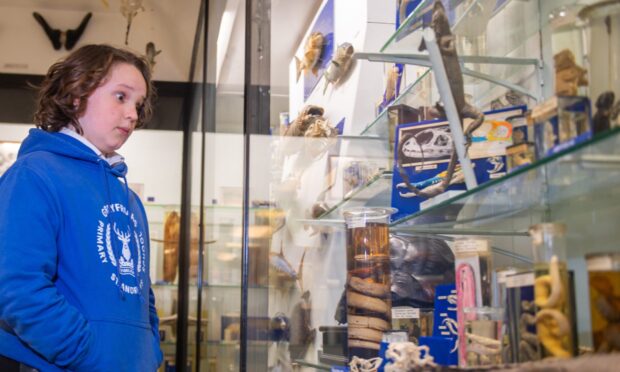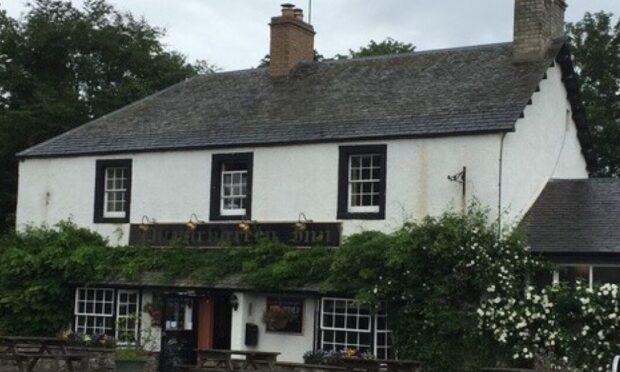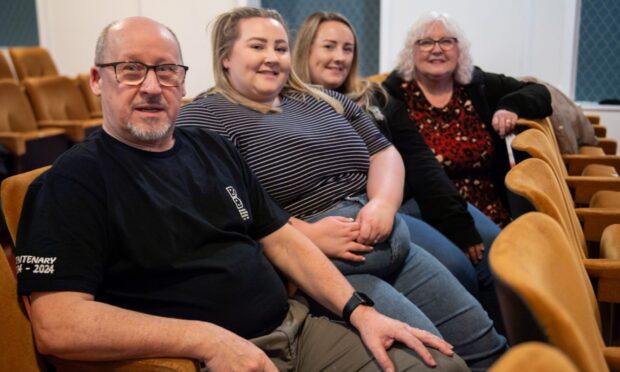For many Christmas dinner is the most important meal of the year. Caroline Lindsay meets three local farmers who produce the main components for this traditional festive feast.
Picture the scene – it’s 1523 and King Henry VIII is tucking into his Christmas feast. Alongside the roast boar’s head, swan, pheasants and peacocks is a lavish new-fangled dish called turkey, a bird only just introduced into Britain from the Americas.
Its popularity grew quickly, and each year, large flocks of turkeys could be seen waddling to London from Norfolk, Suffolk and Cambridgeshire on foot, a journey which may have started as early as August.
Today around 75% of families around the UK serve up a succulent roast turkey as the centrepiece of their festive meal each Christmas, and many of us like to know exactly where our festive fowl has come from.
Susannah Pate and husband Thomas have been rearing free range KellyBronze turkeys for seven years on South Powrie Farm on the northern outskirts of Dundee.
“The family have been here for four generations, variously farming peas, berries, cattle and cereals,” Susannah explains. “We now grow mainly cereals – wheat, barley, oilseed rape and rye, which are used for distilling, animal feed and biofuels – as well as rearing high quality, high welfare turkeys for Christmas, which we sell direct from the farm. We also have pigs and a few sheep.”
It was a visit to a friend’s farm in Fife that inspired the Pates to rear the turkeys.
“We had always been bowled over by their quality and flavour and when our friends decided to focus on other areas of their business, they offered us the opportunity to take on the turkeys,” says Susannah. “It tied in really well with our farming year as well as our love of good, local food and connecting directly with customers.”
So what’s so special about a KellyBronze turkey? Well, it’s all down to an Essex turkey farmer called Derek Kelly, as Susannah explains.
“In the 1980s, as supermarkets were demanding fast growing, cheap white turkeys and consumers liked ‘clean’ looking white turkeys with no feather stubs, the bronze turkeys were going rapidly out of fashion,” she says. “Derek Kelly, now in his 80s, scoured the country and brought all the bronze breeds back to his farm. Their farming friends thought they were crazy, but the Kelly family has spent the last 30 years developing a turkey for the best flavour and tenderness, through a careful breeding programme, combined with slow-growing the turkeys to full maturity.”
Each year, the Pates rear a few hundred turkeys from day-old chicks until they reach maturity at about six months when they weigh anything between 4kg and 13kg.
“We love having the turkeys around, and they are curious creatures and always react to what is going on around the farm,” Susannah smiles. “It’s lovely to see them roaming around the paddock, especially in the autumn sunshine when the sun brings the bronze colours out beautifully.
“Our aim is always to give them the best life possible while they are with us, and we do everything to the highest welfare standards,” she continues. “It is all part of the farm cycle and we make the most of each stage.”
While the livestock will still need to be checked on Christmas Day, Susannah is looking forward to taking it a little easier.
“It’s about all being together as a family, as the month before is pretty busy, and it’s great just to relax and enjoy the celebrations,” she says.
And of course, pride of place on the Christmas table will be one of their own turkeys – unless business has been too good. “Thomas always jokes that if we’re eating baked beans on toast it means we’ve had a really good year!” Susannah smiles.
A great turkey has to be accompanied by perfect roast potatoes and the secret here is to choose a variety of spuds suited to the job. The man to ask is Robin Niven, who runs Channel Farm and Loch Leven’s Larder near Kinross with wife Emma.
In a rural setting overlooking Loch Leven, Channel Farm produces broccoli, carrots and potatoes, supplying supermarkets and top-notch restaurants in Edinburgh and Glasgow, as well as local businesses and stocking their own farm shop.
“We’ve been growing potatoes since 1991 on the farm,” says Robin. “The south-facing alluvial soil with underground irrigation offers perfect conditions for doing so.”
With 1,000 acres all in, 40 acres are given over to potatoes, and the Nivens produce 1,000 tonnes of spuds annually.
“We keep a good virile stock from the previous year, propagate them and plant the 35mm mini tubers in April,” Robin explains. “Eventually we’ll desiccate them with a herbicide shortly before harvest and then flail the tops (cut them off) so they’re the ideal size.
“We harvest in mid-September and then keep them in a cold store at three degrees to stop them sprouting just as you would at home.”
Come Christmas Day the Nivens will be preparing piles of Maris Piper potatoes to make tasty roasties – Robin recommends parboiling them, mashing them about a bit and then roasting them in a little Scottish rapeseed oil.
“We have mashed potatoes as well – it’s not a proper meal if you don’t have two types of tatties,” he says. “Maris Pipers are great all-rounders but if your preference is for a perfect baked potato, always use a Saxon as they are wonderful baked.”
With no livestock on the farm, it means that December 25 is a quieter day than usual for the Nivens and they can enjoy a well-earned break although it’s up early to put the oven on for the turkey.
“And I might find myself being sent out to the fields to get some last-minute veg,” smiles Robin.
“Everything on our plate is grown by us apart from our turkey which comes from Gartmorn Farm in Alloa and the beef Wellington is from a local butcher in Kinross,” he continues. “We believe that if we sell local we should also buy local but it’s a good feeling growing so much of our own food.”
No Christmas meal is complete without Brussels sprouts, even if it’s the one and only time of the year many of us actually eat these tiny green powerhouses of energy. Part of the cabbage family, they’re low in calories but high in many nutrients, especially fibre, vitamin K and vitamin C, and brimming with antioxidants.
Alan Steven produces Brussels sprouts, parsnips, potatoes and spring barley for malting at Hillhead Farm in Kingsbarns, which he runs with his brother John.
“We’ve been growing Brussels for more than 25 years now – we started growing them as the returns for growing barley got poorer,” Alan explains.
“The Brussels sprouts – mainly a variety called Petrus – are normally harvested in February and March. They’re all grown from plants sown from seed in nurseries, then brought to us in trays by. We load these on to our planter, planting throughout May, with different varieties and spacings to get the sprouts to grow to the right size for the market.
The Brussels are harvested by two machines that run on tracks while farm workers operate cutters and stripper blades to take the sprouts off the stacks in the field and fill a hopper. This then empties into wooden boxes on trailers which take the crop to be chilled before grading into sizes for supermarkets including M&S, Sainsbury’s and Waitrose.
Like the Pates and the Nivens, Alan and his family are looking forward to a traditional family get-together.
“We always have a turkey crown with all the trimmings, our own potatoes roasted and mashed, roast parsnips and, of course, our Brussels sprouts – as many as we can!” Alan laughs.
“The secret is not to overcook them – just lightly steam them and serve with a little butter.”
Aware that sprouts aren’t to everyone’s taste, he adds: “Folk who think they don’t like them should try them again because the flavour has changed so much in the time we have grown them.
“My 10-year-old son and I actually prefer them raw, just off the stalk in the field – each variety tastes slightly different.”
Info
www.southpowrie.co.uk
www.lochlevenslarder.com
